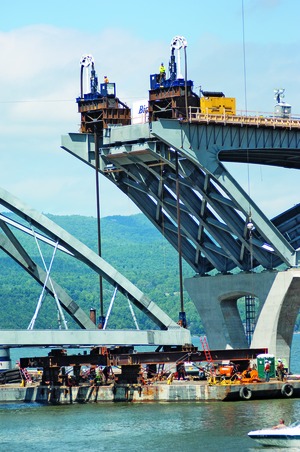
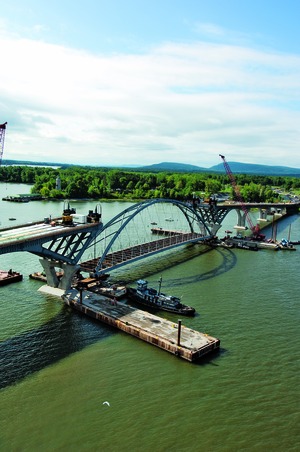
Crews are working on the finishing touches on a vital link between New York and Vermont over Lake Champlain. While the originally planned October reopening day has passed, no rescheduled date has been announced.
A routine inspection of the Crown Point Bridge in October 2009 found unexpectedly high levels of pier deterioration, prompting the closure of the 2,184-ft-long steel-truss bridge. The New York City office of HNTB Corp. led the fast-tracked design for a new link between Crown Point, N.Y., and West Addison, Vt. The more than 3,000 daily users of the bridge have no other crossing within 100 miles.
HNTB had a 30-member team who worked non-stop with local communities to finalize a new design in just six months, says Ted Zoli, HNTB chief bridge engineer. In late August, crews used a computer-controlled heavy-strand jack system to pick the main span's 405-ft-long, 85-ft-tall, 45-ft-wide prefabricated steel arch into place, says Mark Mallett, project manager for Flatiron Construction Corp., Firestone, Colo., which has the $70-million contract to build the crossing. The arch had to match up with the approach spans on each side. “We were measuring literally on the day of the lift,” he says. “Even temperature can affect the steel.”
The operation included a barge at each end of the crossing; once positioned, they were dewatered to give the strand jacks room to lift the arch into place. All the while, crews had to keep an eye on the approaching Tropical Storm Irene, which did not end up impacting the installation.
An emergency contract to build new ferry slips has given commuters an alternative while the new steel tied arch is built. The local communities, which had planned an October reopening celebration, postponed the festivities until May 2012 due to the project delays.
“The schedule is a hot topic on this job,” says Mallett. “The lift was originally planned for June or July.” However, while drilling the 6-ft-dia shafts for seven piers up to 100 ft long and socketed as deep as 15 ft into rock, crews hit components of the old bridge he notes. The old bridge had been demolished in December 2009.
Thanks to winter 2010's heavy snowfall, the lake level reached record levels and flooded out the assembly yard, Mallett says. “We couldn't get our yard foundations or deliveries to come in.”
The flooding delayed preassembly of the arch structure elements, which were fabricated by High Steel Structures in Williamsport, Pa. Precast concrete panels have been placed on the deck, which did not have concrete due to the structure's 900-ton pick weight, says John Grady, New York State Dept. of Transportation regional construction engineer. The panels were staged on barges, lifted by crane to one end of the arch and moved into position using rollers. Transverse closure pours and post-tensioning on the approach spans are now complete.
NYSDOT still expects to finish construction by the end of this year, says spokesman William Reynolds. The primary work remaining includes final closure pours, installing railing and fencing, pavement striping and other punch-list items, say agency officials.


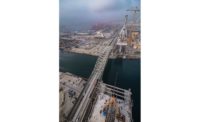
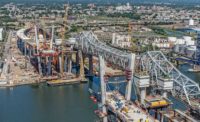
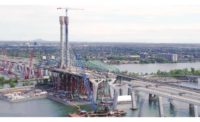
Post a comment to this article
Report Abusive Comment